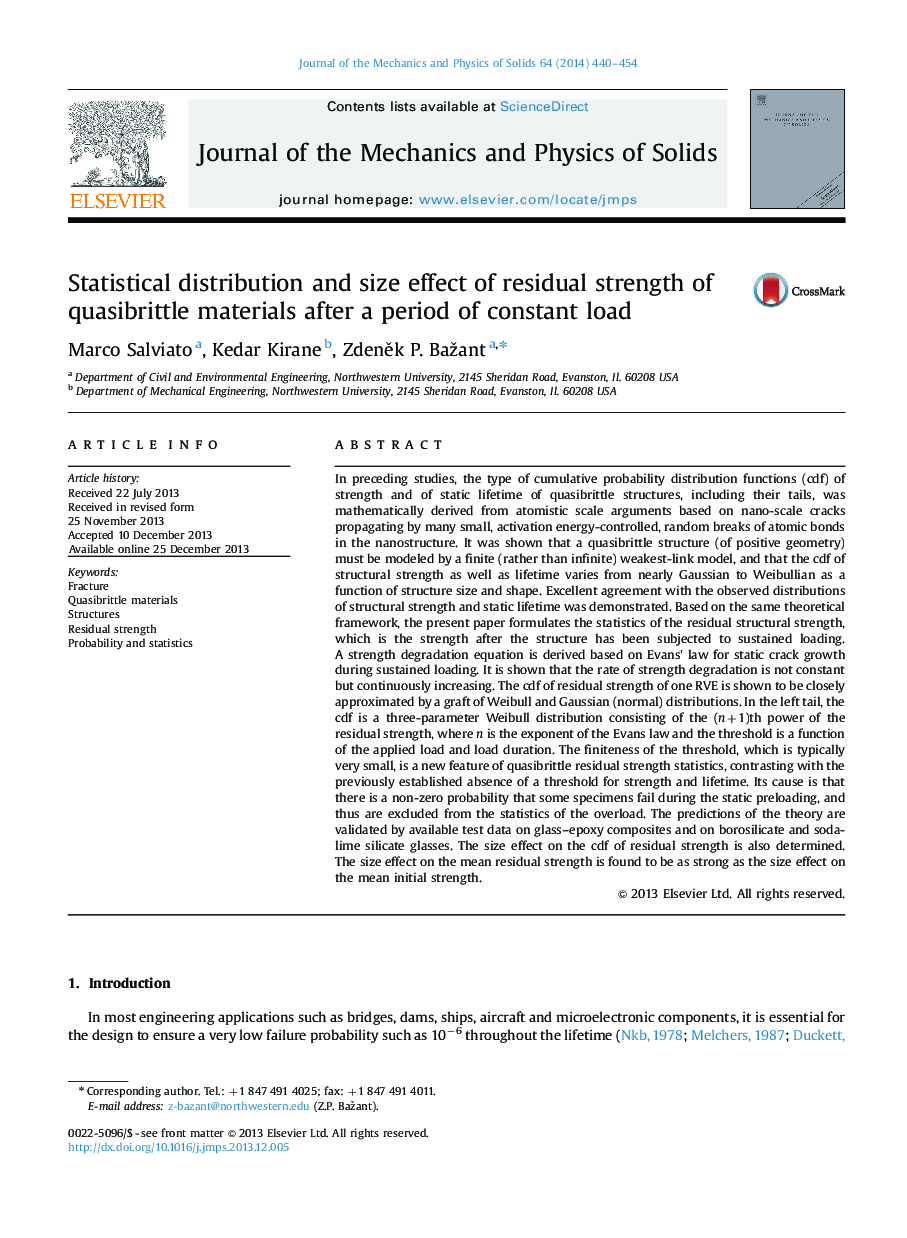| Article ID | Journal | Published Year | Pages | File Type |
|---|---|---|---|---|
| 7178321 | Journal of the Mechanics and Physics of Solids | 2014 | 15 Pages |
Abstract
In preceding studies, the type of cumulative probability distribution functions (cdf) of strength and of static lifetime of quasibrittle structures, including their tails, was mathematically derived from atomistic scale arguments based on nano-scale cracks propagating by many small, activation energy-controlled, random breaks of atomic bonds in the nanostructure. It was shown that a quasibrittle structure (of positive geometry) must be modeled by a finite (rather than infinite) weakest-link model, and that the cdf of structural strength as well as lifetime varies from nearly Gaussian to Weibullian as a function of structure size and shape. Excellent agreement with the observed distributions of structural strength and static lifetime was demonstrated. Based on the same theoretical framework, the present paper formulates the statistics of the residual structural strength, which is the strength after the structure has been subjected to sustained loading. A strength degradation equation is derived based on Evans' law for static crack growth during sustained loading. It is shown that the rate of strength degradation is not constant but continuously increasing. The cdf of residual strength of one RVE is shown to be closely approximated by a graft of Weibull and Gaussian (normal) distributions. In the left tail, the cdf is a three-parameter Weibull distribution consisting of the (n+1)th power of the residual strength, where n is the exponent of the Evans law and the threshold is a function of the applied load and load duration. The finiteness of the threshold, which is typically very small, is a new feature of quasibrittle residual strength statistics, contrasting with the previously established absence of a threshold for strength and lifetime. Its cause is that there is a non-zero probability that some specimens fail during the static preloading, and thus are excluded from the statistics of the overload. The predictions of the theory are validated by available test data on glass-epoxy composites and on borosilicate and soda-lime silicate glasses. The size effect on the cdf of residual strength is also determined. The size effect on the mean residual strength is found to be as strong as the size effect on the mean initial strength.
Related Topics
Physical Sciences and Engineering
Engineering
Mechanical Engineering
Authors
Marco Salviato, Kedar Kirane, ZdeneËk P. BazËant,
